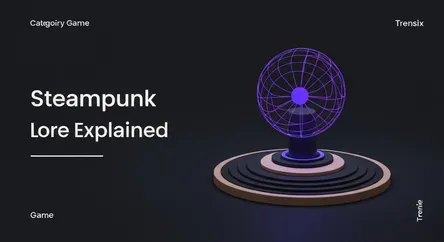Game
Steampunk Lore Explained

Explore steampunk, the sci-fi subgenre blending Victorian aesthetics with steam-powered tech. Discover its impact on gaming lore and culture.
What is it?
Steampunk is a subgenre of science fiction inspired by 19th-century industrial steam-powered machinery. It imagines an alternative history or a fantasy world where steam power has maintained mainstream use, leading to retrofuturistic inventions as people in the Victorian era might have envisioned them. The aesthetic is marked by brass, copper, gears, clockwork, and intricate mechanical designs, often blending historical settings with advanced, albeit anachronistic, technology. Think airships, clockwork automatons, and elaborate steam-powered weaponry set against a backdrop of Victorian London.
Why is it trending?
The steampunk aesthetic offers a visually rich and imaginative alternative to mainstream sci-fi and fantasy. In gaming, titles like BioShock Infinite, Dishonored, and Frostpunk have popularized its unique world-building potential. The genre allows developers to create stunning environments and innovative gameplay mechanics centered on intricate gadgets and machinery. Its blend of historical nostalgia and technological fantasy provides a fresh canvas for storytelling, attracting players who crave unique artistic styles and complex, lore-driven worlds that stand out from typical futuristic or medieval settings.
How does it affect people?
Steampunk provides a powerful creative outlet that extends beyond gaming into cosplay, literature, and art. For players, it offers immersive worlds that explore themes of industrialization, invention, and social commentary. The detailed lore and distinct visual style foster a dedicated community of fans who engage deeply with the material, creating fan art, stories, and elaborate costumes. It encourages a hands-on, maker-centric culture, inspiring people to appreciate craftsmanship and the intricate beauty of mechanical design, connecting them through a shared passion for a uniquely imagined past.